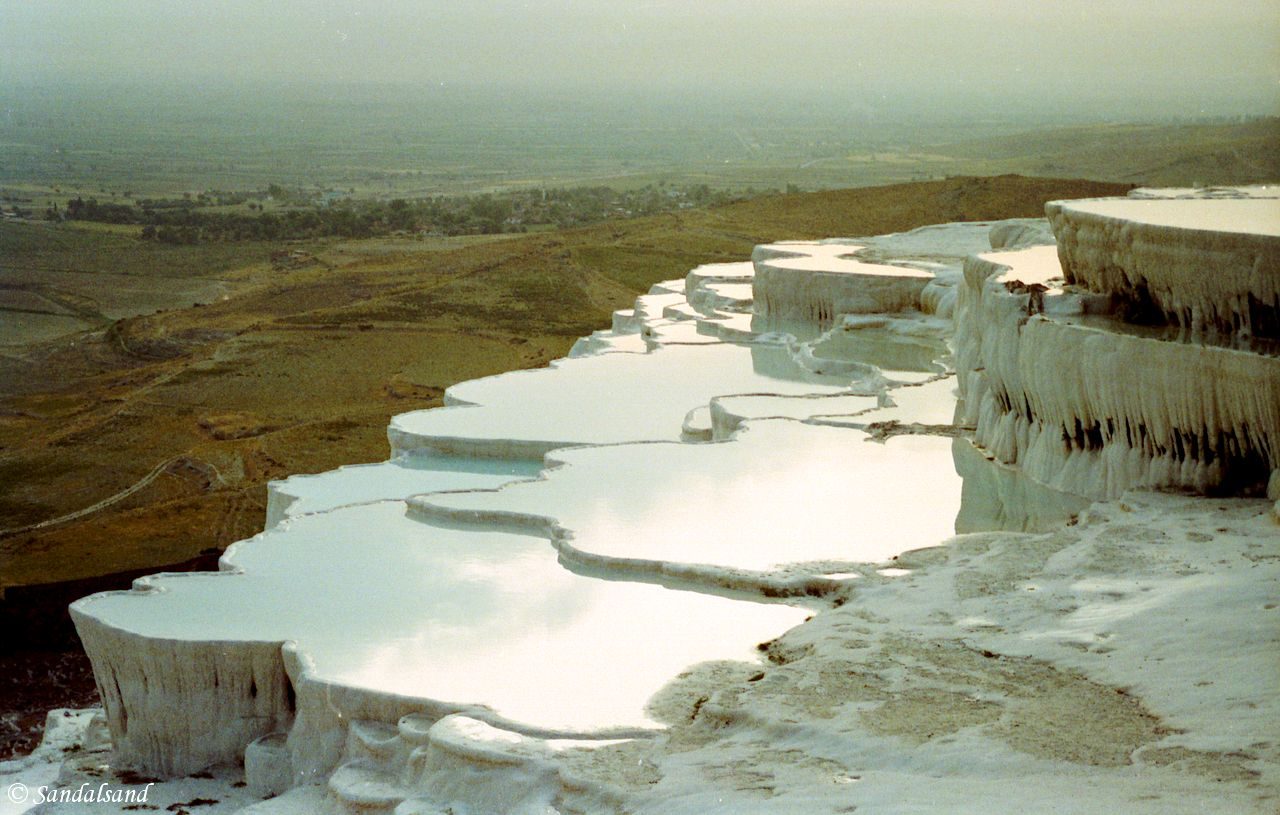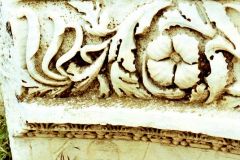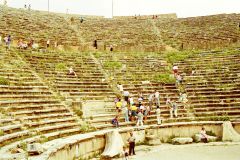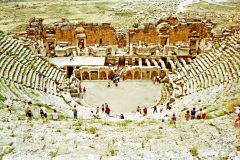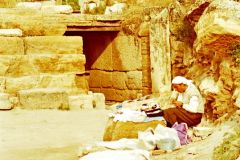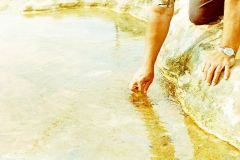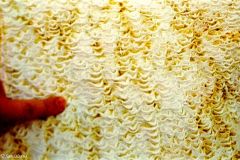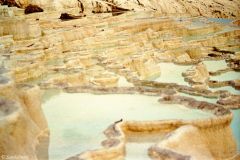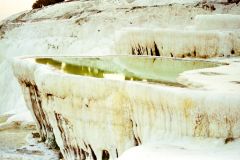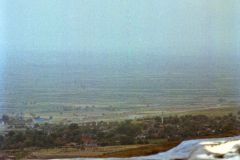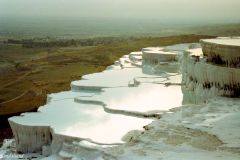Come for a bath and a look at the great white terraces of the heritage site Hierapolis-Pamukkale in central Turkey.
The UNESCO World Heritage List includes more than a thousand properties with outstanding universal value. They are all part of the world’s cultural and natural heritage.
Official facts
- Country: Turkey
- Date of Inscription: 1988
- Category: Cultural and natural site
UNESCO’s World Heritage Centre’s short description of site no. 485:
“Deriving from springs in a cliff almost 200 m high overlooking the plain, calcite-laden waters have created at Pamukkale (Cotton Palace) an unreal landscape, made up of mineral forests, petrified waterfalls and a series of terraced basins. At the end of the 2nd century B.C. the dynasty of the Attalids, the kings of Pergamon, established the thermal spa of Hierapolis. The ruins of the baths, temples and other Greek monuments can be seen at the site.”
My visit
I am not at all surprised that this “unreal” landscape at Hierapolis-Pamukkale is on the List. Spending a couple of weeks on the Turkish Mediterranean coast in 1992 I went up here on a day-trip. I was not disappointed.
Pamukkale means “cotton castle” in Turkish and derives its name of course from the white chalk terraces in the mountain slopes near Denizli in south-western Turkey. The terraces have a beautifully location high above the plain. The terraces as well as the springs in the area contain hot water, holding 35 degrees.
All of this is natural of course. Indeed, this cotton “bed” and the hot springs have for thousands of years been attracting visitors from near and far. It was obvious that UNESCO in 1988 put Pamukkale-Hieropolis on its World Heritage List.
To be accurate, according to Wikipedia, when calcium carbonate deposit in the water it takes the form of soft jelly. Eventually it hardens into travertine. Travertine is a form of limestone often with a fibrous or concentric appearance and exists in white, tan, and cream-coloured varieties.

